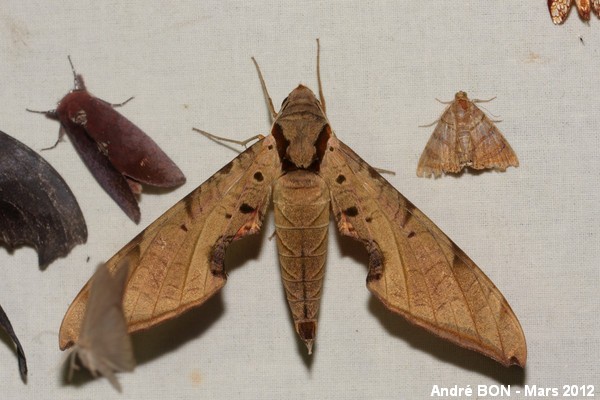
| Streaked Sphinx (Protambulyx strigilis (Linnaeus, 1771)) |

|
|
Scientific name: Protambulyx strigilis (Linnaeus, 1771) Common name: Streaked Sphinx French name: Order: Lepidoptera Suborder: Heterocera Family: Sphingidae Subfamily: Sphinginae Wingspan: 108–134 mm. Biotope: Tropical and subtropical lowlands. Geographic area: From southern Florida through Central America to South America as far as Argentina. West Indies. Flight time: Depending on regions, in March and June in Florida, all year round in Costa Rica, etc. Number of generations : Caterpillar: Green and marked with yellow oblique dotted lines. The upper side of the head shows two whitish lines ending with sharp points while extending and diverging on the first two segments. The typical tail of the Sphingidae family is extended by an oblique white stripe on each side of the body. The back is sometimes marked with a few dark reddish spots. Host plant: Various plants of the Anacardiaceae and Simaroubaceae families. |
The inner margin of Protambulyx strigilis' fore wing bears a large notch just after the anal angle. The upper side of the fore wings is pale greyish yellow on moths of the pale form and reddish brown on moths of the dark form. They show a thin submarginal line and a dark patch close to the notch. The veins are underlined by greyish green, especially veins 3 and 6. There are three dark brown rounded spots close to the inner edge and the costal edge bears less marked triangular patches. The hind wings are golden orange yellow with a submarginal line and irregular cross lines. The sides of the thorax are marked by a broad dark reddish brown band. The upper side of the abdomen's segments, well delimited by a thin pale line underlined by a dark line, bears oblique lines. |
| [To know more about the Streaked Sphinx] [Top] |

|
I have shot this picture at Roura, at Camps Patawa, during a light trap night session. |